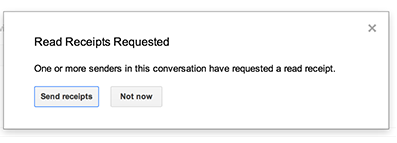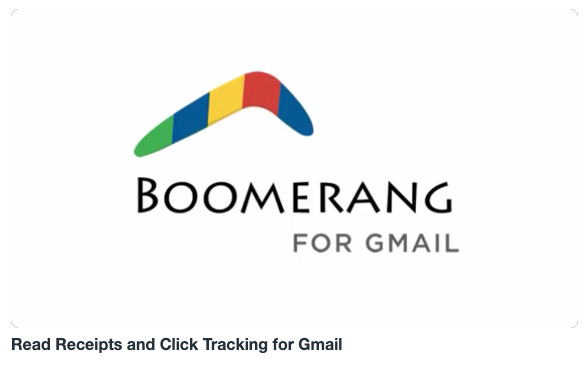
Gmail read receipts are constructive for those important emails that need to be actioned immediately. Requesting a receipt in Gmail can make a big difference in response rates. Fortunately, it’s effortless to request and return Gmail read receipts to enhance communication and make sure those crucial tasks get completed quickly.
With remote work on the rise, it’s not uncommon for people to deal with large volumes of incoming emails. For many organizations, successful email management has become almost a job in and of itself!
Streamline your work process
By requesting and returning Gmail read receipts, you can create a system of accountability that streamlines your work process, whether you work from home or in a busy office, or are in charge of an email marketing campaign. In this article, we will discuss how to request read receipts in Gmail as well as how you can return Gmail read receipts, as well as alternatives to Gmail, read receipts.
What are Gmail read receipts?
Read receipts are used for time-sensitive information to confirm that the recipient has received the message. We’ve all had the occasional important message land in our “Junk” and “Spam” inboxes. Cyber security is increasingly becoming a focus for schools and businesses, and many email inboxes will direct an essential message to the wrong folder when it is wrongly flagged as suspicious.
Read receipts prevent this from happening by providing the sender peace of mind knowing that a read receipt will be sent back shortly after the message is read. Read receipts are also a great way to enhance engagement with remote workers.
If someone has read an important message that you’ve sent to them via email, it’s harder for them to claim to have missed it or to have been busy with something else. It keeps workers as well as managers and clients accountable and streamlines the work process.
How to set up read receipts on Gmail
Read receipts are generally a function of a work or school account that is managed by an administrator. Gmail accounts that have read receipts are set up through Google Workspace, formerly known as G-suite. Therefore, an ordinary, free Gmail account likely won’t include the option to request and return Gmail receipts.
The benefits of a business email address aren’t limited to the ability to request and receive read receipts. A professional email address lends more credibility to your organization than a typical @gmail.com email address. If you are a freelancer, business owner, or running a nonprofit, a professional email address is something to consider.
Here is a step-by-step guide to set up read receipts in Gmail:
- Log into your Gmail account as you usually do.
- Select “compose” to write your email. This option is located toward the top-left corner of the window when accessed through a PC.
- Write everything you need to include in the email.
- Click the down arrow next to the blue “Send” box. Additional options will pop up.
5. Select “request read receipt.”
6. How will you know if your recipient read the message? That depends: Your recipient may have the option to approve or deny your read-receipt request. If they approve it, you’ll get an email notifying you who opened your email and when. Below is a screenshot of what recipients might see on their end.

7. Hit “Send.” Viola! Your email with a request for a read receipt has been sent.
Read receipts are popular in industries that deal with a lot of time-sensitive data, such as in health care settings or in the world of finance. Industries that handle a lot of confidential and time-sensitive information rely on read receipts and compliance requirements.
For example, hospitals must ensure HIPAA compliance with their emails and also maintain quick response rates. Read receipts are a great way to ensure that the correct information is being sent to the right people at the right time.
How to return read receipts in Gmail
According to statistics, 99% of email users check their inboxes daily. Read receipts show the people you work with that you have, indeed, read their email and are working on getting their request actioned as soon as possible. It is a great way to save time and avoid terse responses that might get misinterpreted.
Any time work can be automated to make you more efficient is a win. Read receipts allow you to focus on the task at hand without having to worry about all the back-and-forth, time-consuming “Did you get that email?” calls or texts from your colleagues. Here’s how you can quickly respond to a read receipt in Gmail.
- Open an email message with a requested read receipt – a pop-up will show to tell you the read receipt is requested.
- To send the receipt right away, click “Send Receipts.”
- To send the receipt later, click “Not now.” You will be prompted to send the receipt the next time you open the email.
- Some read receipts will come through without a request. This means that a read receipt was sent automatically, most likely through a third-party vendor.
What if my Gmail read receipts aren’t working?
Are your Gmail read receipts not working? There are a few answers to this.
First, you must check that you have a Gmail account through a school or business. Any Gmail account that is set up via an Administrator should have the read receipt function. If you have a standard, free Gmail account, the Gmail read receipt is generally not included as a function.
If you do have read receipts and sent them and have not received a response, it may be because the person you are sending them to is opting out of sending a response. Be sure to communicate with your colleagues, employees, and clients about expectations for sending read receipts.
How can you tell if an email has been read in Gmail without a read receipt?
If you don’t have a Gmail account that qualifies for read receipts, you can use third-party software that offers that feature so you can tell if your email has been read without a read receipt. There are browser extensions you can download that will tell you if your email has been opened and how many times it has been opened.
Check this great video tutorial on Gmail read receipts in 2022

Read receipt alternatives
Tired of read receipts clogging up your inbox? Through third-party vendors such as Mailtrack, Mailtag, Gmelius, or Free Email Tracker create a “read” symbol similar to what you get via SMS or internet messaging services. Free Email Tracker even allows you to set up your read receipts to come through as an SMS notification as an alternative to the traditional read receipt that comes through as a separate email.
MailTrack

Mailtrack, for example, has a free browser extension you can download that tells you how many times your email has been opened.
Boomerang

Other third-party providers such as Boomerang, offer the ability to get insight into which links were clicked within your email and how many times. Currently, the company offers ten complimentary message credits per month, so this would work for those who don’t frequently send emails that require confirmation of receipt.
Gmail read receipt extensions & plugins explained
Read receipts can be frustrating because they can quickly clog up your inbox. Wouldn’t it be great if your emails could be marked as “read,” such as you see in some messenger apps, with a symbol near the message showing that the message has been opened?
There are a lot of great Gmail read receipt extensions & plugins that work in exactly that way. Mailtrack, as we previously mentioned, has a free browser extension that will put a little green check mark next to the subject line confirming that the email has been sent, with a double green check mark indicating that the email has both been successfully sent and read.
Free email tracker
Another great free option is Free Email Tracker, which has similar offerings to Mailtrack but comes with some serious bonus features, such as the ability to get read receipts via SMS! This is an excellent option for people who want read receipts but aren’t always checking their emails. It’s also a great option for people who have super time-sensitive emails that have to be sent, received, and confirmed ASAP. Although the service is free, Free Email Tracker does add a branded signature to your emails that can’t be removed unless you pay a $5 monthly fee.
Mailtag
Mailtag is another great read receipt browser extension that isn’t clunky and integrates sleekly into the existing Gmail design. Symbols indicating whether an email has been read or not can be displayed or not displayed, depending on your preference. Furthermore, Mailtag allows you to see which links were clicked in your email and how often an email was opened. Unlike Mailtrack, Mailtag doesn’t offer any complimentary services – you must subscribe and pay for their extension to use it.
Gmelius
For those that work on large teams or engage in email marketing, Gmelius can be a great option. The free version of this read receipt extension allows you to create email campaigns, delegate messages to people on your team and create Kanban boards.
What are the limitations of Gmail read receipts?
There are some limitations to Gmail read receipts.
- While automatic Gmail read receipts will be sent as soon as an email is opened, read receipts that allow the recipient to opt out can be less accurate.
- Simply confirming that a person has opened your email isn’t necessarily confirmation that they have read it. People can frequently accidentally open emails while scrolling through their phone, open up an email and delete it immediately before reading, or even open up an email and read it completely with no intention of responding or taking action. While read receipts can be helpful in the workplace and in marketing campaigns, it’s really up to you to truly follow up and make sure that your recipient is engaged in the message.
- Gmail read receipts can quickly clog up your inbox and make your emails harder to manage.
- Your recipient may have to approve your request for a read receipt, therefore you can’t know for sure that a lack of a read receipt means your recipient has not read your email. They may have just chosen to deny the read receipt.
- You can’t request a read receipt on email blasts. It only works when you address the email to individual recipients in the “To” and/or “CC” fields.
To Conclude
Just like with popular messaging platforms like iMessage or Whatsapp, a “read receipt” notification lets you know if your recipient has indeed read your message (or email in this case).
Turning on “read receipts” is a powerful feature for any email client, and now Gmail has introduced it so you can know when someone has read your email…well, kind of.
Email read receipts are a great way for teams to communicate with each other and confirm receipt of important emails without having to take time to type up replies. It can also eliminate the possibility of emails ending up in the “Junk” or “Spam” folder, which can be a disaster, especially if they are time-sensitive or part of an important project.
Related topics
- How to avoid Gmail Promotions tab (is it worth it?)
- Set Gmail dark mode or dark theme (1-minute guide)
- How to un-send or recall emails in Gmail
- Sort emails in Gmail by date, name, subject, sender & more
- Create new folders in Gmail to organize and sort emails

